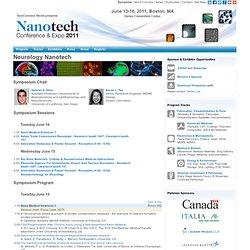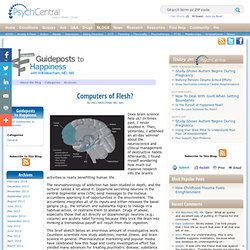

New NeuroFocus headset gets closer to the Mynd. Wendy Davis: Helping manufacturers bring energy-saving lighting to consumers. Nearly 2,000 tiny lights shine from the ceiling of Wendy Davis' Maryland laboratory, allowing the "vision scientist" to come up with measurements for energy saving lighting for homes and businesses.

The Vision Science laboratory that Davis established and leads at the National Institute of Standards and Technology (NIST) -- the only one of its kind in the world -- runs experiments with LEDs or light-emitting diodes, now used in traffic signals, nightlights and backpackers' headlamps. LEDs, a type of solid-state lighting, last much longer than other lights and many people are interested in expanding the market for their use. Nearly 12 percent of the electricity consumed in the United States goes to powering lights in people's homes and 25 percent is used in commercial buildings, according to the Department of Energy.
"LEDs have the potential to be much more efficient than the light sources we have now," Davis said. "You can't just take the work we're doing and translate it," Davis said.
Snsanalytics. Public release date: 11-Sep-2011 [ Print | E-mail Share ] [ Close Window ] Contact: Robert Perkinsperkinsr@usc.edu 213-740-9226University of Southern California For the first time, USC scientists have mapped out a neuroreceptor. This scientific breakthrough promises to revolutionize the engineering of drugs used to treat ailments such as Alzheimer's disease and schizophrenia. The team produced the world's first high-resolution images of the α7 (Alpha 7) receptor, a molecule responsible for transmitting signals between neurons – particularly in regions of the brain believed to be associated with learning and memory.
Using the image, scientists will be better equipped to design pharmaceuticals specifically to interact with the receptor, instead of blindly using a trial-and-error approach. The high-resolution image will also help neuroscience researchers study how these receptors receive and transmit neuronal signals, a question that has puzzled researchers for decades. [ Print | E-mail.
Neurotechnology. Neurotechnology is any technology that has a fundamental influence on how people understand the brain and various aspects of consciousness, thought, and higher order activities in the brain.

It also includes technologies that are designed to improve and repair brain function and allow researchers and clinicians to visualize the brain. Background[edit] The field of neurotechnology has been around for nearly half a century but has only reached maturity in the last twenty years. The advent of brain imaging revolutionized the field, allowing researchers to directly monitor the brain’s activities during experiments.
Neurotechnology has made significant impact on society, though its presence is so commonplace that many do not realize its ubiquity. As the field’s depth increases it will potentially allow society to control and harness more of what the brain does and how it influences lifestyles and personalities. Current technologies[edit] Imaging[edit] Transcranial magnetic stimulation[edit] Miniature 'Wearable' PET Scanner Ready For Use. Nanotech 2011 - Nanotechnology Conference and Expo. Photo : yfrog.com/h4otxjqj. Brain Fitness and Cognitive Health Authority: Market Research and Advisory Services.
Neuroscience and Cognitive Training.
Neurology Nanotech. Nanoscale technologies have a potential revolutionary impact into the basic understanding, visualization and therapeutic applications of neuroscience.

The special symposium on Nanotechnology to Neuroscience will deliver the state of the art in nanotechnology applications towards the development of therapies and pharmaceuticals for the treatment of neurological disorders, taking advantage of the nanoscale structure of neural cells (both neurons and glia). The symposium will include technologies such as quantum dots and other nanotechnologies that can visualize, measure, and track the molecular structure and dynamics of both intracellular and extracellular processes in neural cells. Technologies will be presented that are designed and used to regulate, influence, and modify cellular neural properties such as directed growth, proliferation, secretion of specific factors, differentiation, etc.
Nanomedicine: Nanotechnology, Biology and Medicine (Nanomedicine) Journal of Nanoparticle Research. Guideposts to Happiness. Does brain science help us?

In times past, I never doubted it. Then, yesterday, I attended an all-day seminar about the neuroscience and clinical management of destructive habits. Afterwards, I found myself wondering how much our massive research into the brain’s activities is really benefitting human life. The neurophysiology of addiction has been studied in depth, and the lecturer talked a lot about it. Dopamine secreting neurons in the ventral tegmental area (VTA) send messages to the nucleus accumbens apprising it of opportunities in the environment. This brief sketch belies an enormous amount of investigative work. At the seminar, when the presenter started speaking about the treatment of addiction, rather than the science of it, there was a shift in emphasis. Sure, there was a section on drugs that treat addiction, like naltrexone for alcoholism, buprenorphine for opiate dependence, and mecamylamine for nicotine cravings.